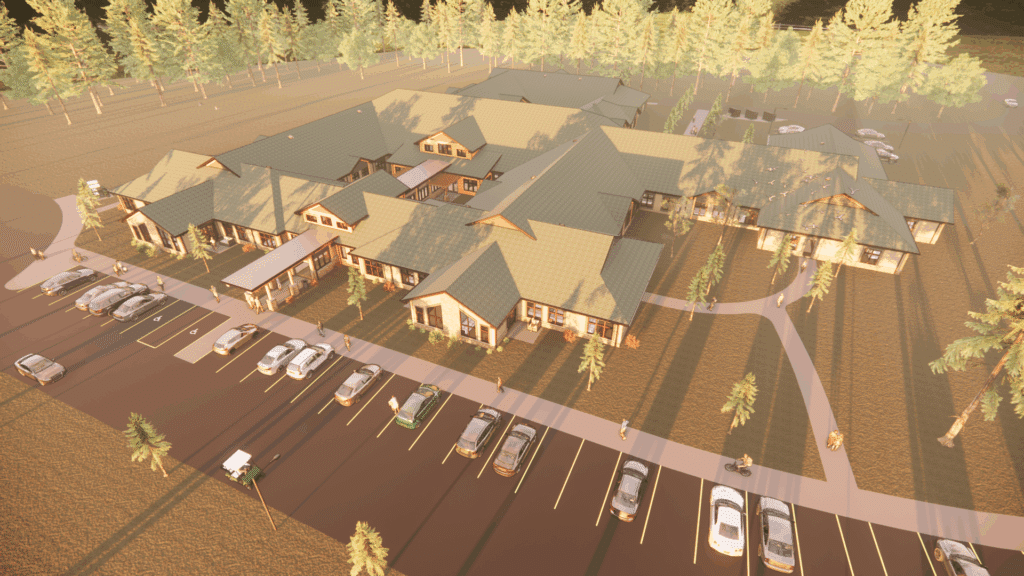
Building to last: Master planning for financially sustainable senior living communities
How smart planning supports long-term sustainability in senior housing
In senior living, the true measure of success isn’t just resident move-in day — it’s stability years down the road. With rising costs, workforce pressures, and shifting resident expectations, financial sustainability is one of the greatest challenges facing senior housing developers and operators today.
So, what is the most effective way to address that challenge? A master plan built around financial sustainability from the start.
Master planning isn’t just about what your community will look like; it’s about how it will function, evolve, and perform financially over time. Done well, it gives you a clear roadmap for making informed decisions that balance mission, market, and margin.
Why financial sustainability must be built in — not bolted on
Senior living communities operate on tight margins. Labor is costly and in short supply. And today’s seniors want more flexible, service-rich environments — but at a price point they can afford.
That’s why sustainability can’t be an afterthought. Without a plan to align physical space, staffing, services, and revenue models, your market communities can become financially strained — especially in under-occupied buildings or overbuilt markets.
A financially focused master plan helps you:
- Align development scope with long-term operating cash flow.
- Avoid overdesign that doesn’t generate ROI.
- Phase growth in line with market absorption.
- Optimize staffing efficiency through layout and programming.
- Ensure flexibility to adapt to changing care needs and payer mixes, such as shifts between private pay, government reimbursement, or managed care.
What to consider when planning for financial sustainability
Every senior housing project is different, but financially sustainable ones tend to share common strategic choices. As you plan, consider:
-
Understand your market.
“If you build it, they will come” is great for the movies, but not in senior housing. Having a clear understanding of the demographics of your market area is critical to designing a solution that meets your target market’s needs and wants and is affordable. Market data specific to your area will provide you with factual information, enabling you to make informed decisions for today and the future.
-
Right-sizing services and amenities.
More isn’t always better. Sustainable communities are designed with amenities that support wellness and engagement — but sized appropriately for the population they serve. Avoiding unnecessary square footage reduces both capital costs and long-term operational overhead.
-
Designing for staffing efficiency.
Labor is not only expensive — it’s in short supply. Your layout has a direct impact on how caregivers navigate the space, the number of caregivers needed per shift, and the efficiency with which services can be delivered. A master plan that includes clinical and operational input from day one can significantly improve both care delivery and cost management.
-
Phasing growth strategically.
Building in phases — rather than all at once — allows you to align capital spending with market absorption and occupancy ramp-up. This approach reduces carrying costs and spreads out staffing and marketing investments. In regions experiencing slower lease-up rates, phased development can be critical to maintaining financial stability.
-
Modeling financial scenarios early.
A financially sustainable community isn’t just well-designed — it’s well-understood. Testing a range of scenarios based on occupancy, payer mix, staffing assumptions, debt service, and inflation projections allows owners and investors to understand risks and returns long before breaking ground.
The role of master planning in financial sustainability
Master planning ties all of these elements together. It’s the process that connects your vision to financial and operational feasibility — translating your goals into a concrete, actionable, and data-informed plan.
A financially focused master plan should:
- Start with a demand-driven market analysis to avoid overbuilding.
- Align with your organization’s mission and goals.
- Address your organization’s current realities.
- Identify opportunities to optimize site use and building performance.
- Incorporate insights from care, finance, and operations leaders.
- Use scenario-based financial modeling to guide scope, service mix, and phasing.
- Align capital strategy (including funding sources, debt structure, and timing) with long-term operations.
It’s not just about creating a beautiful community. It’s about creating one that performs — year after year.
Work with experts who understand the full picture
At Community Living Solutions – A Division of DBS Group, our sole focus is senior living. We specialize in designing and building senior living communities that align with your organizational goals and perform — clinically, operationally, and financially. Our master planning process seeks first to understand your organization and then create a solution that combines strategy, design, and construction, with a clear focus on long-term sustainability.
Whether you’re planning a new build or reimagining an existing campus, we can help you assess market conditions, define strategies for your community, and create a plan that supports strong outcomes — on day one and year ten.
Ready to plan for what’s next? Talk with the master planning experts at Community Living Solutions – A Division of DBS Group. Call (612) 963-0889.